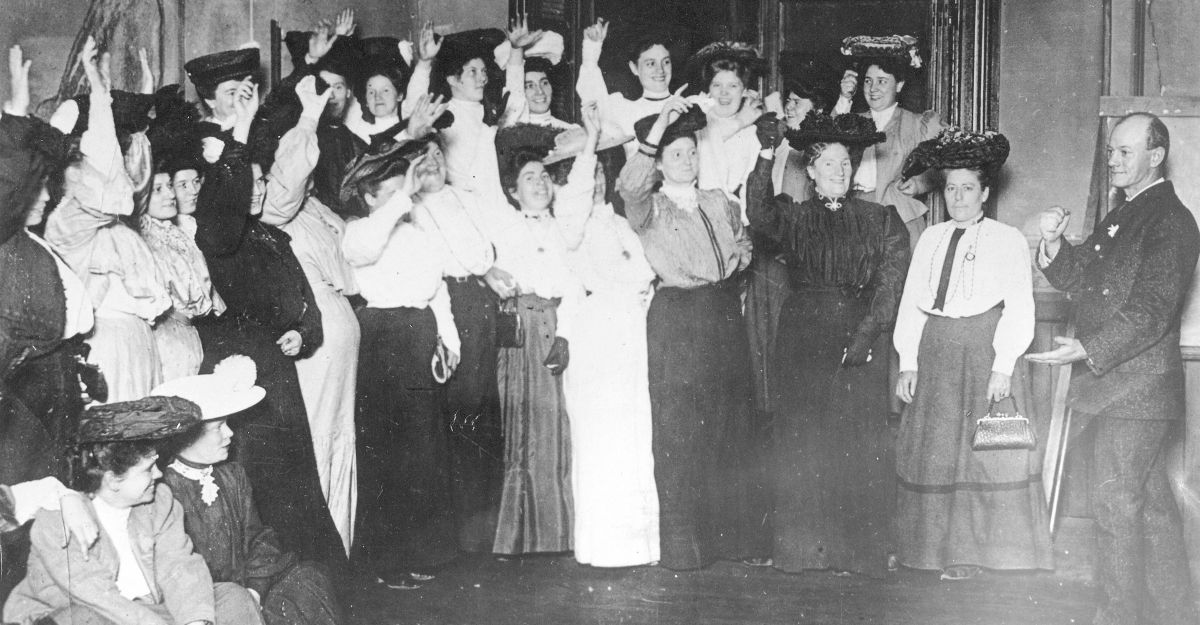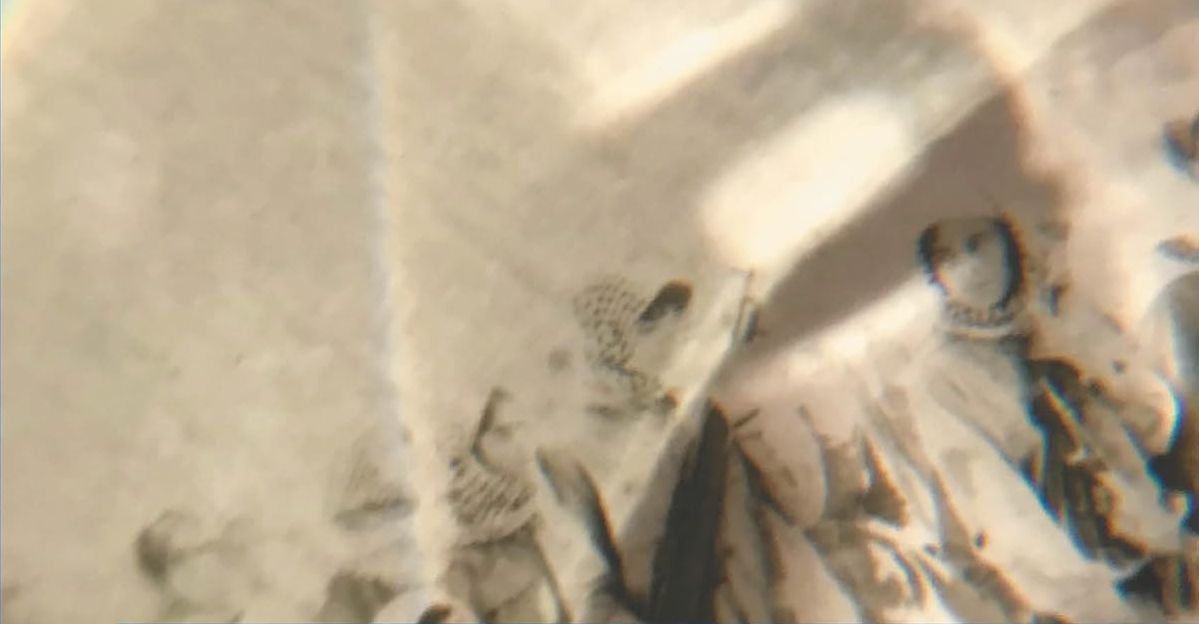We have learned, thank you Bertolt, that there will still be singing in the dark times. Singing such as Ben Walter’s What Fear Was, constructed within and about the metastasising climate catastrophe. It is a short story collection of particularity—most obviously about a place, Tasmania, but also about a time, the howling now.
Walter describes himself as ‘a writer of lyrical, Un-Australian fiction’ which suggests only partial self-awareness. He might better be called an artist, as per Fellini’s definition: ‘A provincial who finds himself somewhere between a physical reality and a metaphysical one.’ He is un-Australian only in the sense that he is wholly Tasmanian, and how that might link to the rest of the continent is moot. He is heir and skilled practitioner—participant of a small but distinctive movement that in 1989 Jim Davidson dubbed Tasmanian Gothic, an idea built on by Edward Colless who delineated the Tasmanian Grotesque. This creaking mansion has a well-appointed ante-room for what we might call the Tasmanian Uncanny, a distinctive magic realist strand of the local imaginary, extant in Richard Flanagan’s Gould’s Book of Fish and the novels of Robbie Arnott, as well as some of Walter’s stories.
Walter is stubbornly local. Not Indigenous—Palawa are absent from What Fear Was, unless as ontological bedrock—but autochthonous. In her 1961 essay ‘Upside Down Hut’, Judith Wright decried Australian writing that arose from ‘a state of mind that imposes itself upon, rather than lives through, landscape.’ Walter’s writing quietly inscribes his connectedness to buttongrass and sassafras, ‘lucky as we were to live in such tenuous landscapes’. His hymns of place recall other recent poetic capturing of home regions in non-fiction by Luke Stegemann (Amnesia Road) and Kim Mahood (Position Doubtful). Stan Grant has stated that, ‘The white poets who ‘imagine’ Australia into being can’t escape their own illegitimacy; just like the nation they write about.’ However, settler-writers like Walter, Stegemann, Mahood create something of value from that friction, when they accept and write from their conflicted position on country they know and care about, even if it can never be truly their own.
This collection is studded with appearances and disappearances. One story conjures the re-emergence of west coast ghost town Crotty. Another, the bravura ‘The Eradication Program’, plays with the possible fate of the phantom Royal Company’s Islands which remained on some official maps into the early twentieth century despite never (apparently) existing. Walter is writing from within the liminality of the local experience, which encompasses Lake Pedder, for example, in all of its changing guises.
Appearance/disappearance as continuum rather than duality underpins ‘A Visitor’s Guide to the Huts of Mount Wellington: 1913’. Once again, Walter works from local knowledge to construct something resonant. The history of huts on Kunanyi/Mt Wellington is a reminder that secrets are long in Tasmania. Twenty years ago, local councils commissioned an archaeological survey which produced the Wellington Park Mountain Huts Inventory, but that report has never been made publicly available.
Environmental thinker Bob Beale claimed that trees bridge the four elements—earth, wind, water and fire—to an extent greater than other living things. Walter uses those elements, and trees, as the flagstones of his fictional world. He was writing while Tasmanian bushfires bit deep into ancient forests and public consciousness, including in 2013, 2016, 2019-20, mourning ‘[t]he sense of uselessness, the irretrievable waste’. Bushfires rear up in several of the stories, including in ‘Beast Evolving’ in which it is anthropomorphised, something akin to the fire made human in Arnott’s Flames.
With his feet planted in Tasmania, Walter surveys the national bookcase. ‘Landscape within Landscapes’ riffs on Gerald Murnane. The opening story, ‘Flathead Out One Day’ is reminiscent of Wayne Marshall. There are strong echoes of Wayne Macauley, not least in the sardonic humour.
There is eerie correspondence also with Barbara Baynton, most notably in ‘Below Tree Level’. This might be the ur-story of the collection, the book’s dark core. It is a disquieting tale in which the narrator struggles to make it through difficult days in a remote bush hut. An older woman arrives and tries to share the space. It ends in elliptical tragedy, the narrator seemingly subsumed into the bush itself—like Wordsworth’s Lucy, ‘Rolled round in earth’s diurnal course/With rocks, and stones, and trees.’ There are claustrophobic overtones of mental illness, the narrator cocooned in a forest ‘fat with moisture’, collecting fallen wood like prehistoric bones, surrounded by decay. ‘Over the past week, I’ve become more dirt and the hut has become more me. Given time, I’m sure we’ll rot into each other like a married couple.’ It is a queasy piece, working within the tradition of bush horror, where the greatest fear is often generated within the sufferer’s own skull. ‘My mind was full of oily hands that couldn’t grip anything for more than a moment.’
Everything tilts with the arrival of an unnamed female hiker, who stakes a psychological claim over the cabin even though she is largely unseen. This speaks to colonisation. It is also a skilful subverting of the terror in Baynton’s ‘The Chosen Vessel’. In her story, it is the bush woman who cowers inside a hut, tormented by the malevolent swagman outside. In both iterations, the fatal unravelling occurs when the protagonist can no longer bear remaining within the compromised territory of the hut and plunges outside to confront awful fate.
Some stories are baroque, like ‘Below Tree Level’; others are little more than vignettes, shimmering and gone, like Donald Barthelme’s suggestion: ‘Truth is a locked room that we knock the lock off from time to time, and then board up again.’ Some stories may be allegories linked to the climate crisis, but they also work as analogies of psychological torment and other forms of trappedness. Most are characterised by a sense of constriction—is this what it means to write from a place accessible and escapable only through effortful sea and air routes?—like anguished dreams that will not be shrugged away on waking.
Reading is always syncretic, as words on the page mingle with the reader’s thoughts and prior knowledge. What Fear Was melded with my own skewed sense of the Tasmanian imaginary, prejudices commonly found on the Northern Island as well as places more far-flung. My mother’s family lived in various parts of Tasmania, and their stories are subterranean but vigorous in my consciousness. I thought about the older kid who convinced my mother to put her finger in a mousetrap that snapped shut. In later life he was the driver of one of the cars that teetered on the fractured edge of the Tasman Bridge in the 1975 disaster. (He also lost an arm and became a Baptist; it was a seminal childhood story about karmic consequences.) This then is the psychological substrate for my reading of the collection’s final story, ‘The Bridge’.
My grandfather remembered a 300-year-old King Billy pine being dug up in the north-west, between Zeehan and Strahan I think, and its enormous root mass encasing far underground a log of Huon pine that was perfectly intact and still fragrant. This sense of the fantastic and the uncanny permeates personal Tasmanian mythologies constructed by many non-natives.
Walter is a writer-walker, one of many. Without recourse to Google, I think of Peter Matthiessen, WG Sebald, Whitman, Will Self, Virginia Woolf, Wordsworth. In a literal and non-pejorative sense, Walter is offering pedestrian prose. Many stories reference treks across country, and the varied rhythms arising—uphill, downhill, racing to beat a storm home, ambling, with or without a heavy backpack. I tried reading passages aloud while walking, which helped reveal the control Walter exercises over his craft. (I suspect these are also words that can be danced. Memo to Dark Mofo: hand a story or two to a choreographer, and something compelling might arise.)
He is attentive even to where vowels and consonants sit (something backhandedly acknowledged in party piece ‘The Slide’). He performs the uncommon feat of using alliteration without banality, typically coupling words with the same starting letter, or picking two words out of three. That is how you build sturdy writing. Stories that could be forgotten for however many years before being discovered cradled deep underground in the tangled roots of the culture—still solid and fragrant.
James Wood once took Martin Amis gently to task for his contention that a great book is one in which almost every sentence is great. Wood called it ‘A Nabokovian idea, but surely a monstrous one.’ What Fear Was is chockers with outstanding sentences that can be excerpted and examined as strings of jewellery, but do not call attention to themselves within the flow of stories. If you have the gift of lapidary sentence-formation, writerly ego pushes to have that brilliance noted. The better writer, of course, sublimates her glittering sentences to the needs of the page and the piece.
Despite this, by isolating three sentences, things might be learned about how Walter does what he does.
The Griselda who came knocking at my door in the tumbling rain to explain I had left the headlights on in my car, who wouldn’t give up even though I had a Pejačević symphony amplified so courageously, until finally I heard the plaintive, persistent knocking and opened the front door to see her saturated.
This sentence spins along, hesitates, increases speed at ‘persistent knocking’ and then glides to a conclusion that feels predestined with the absoluteness of ‘saturated’, and the double-stop way it works with sibilant ‘see’ (also linked to the hurry-along way the last sound of Pejačević is chased through by the first letter of ‘symphony’, counterposed to ‘persistent’ doubling the plosive of ‘plaintive’). The sentence has to be vocalised to properly spot the tics of tempo, and the palette of effects he is employing. Later in the same paragraph there is a four-word sentence, followed by a 145-word sentence: it is not showiness, because it works. This is not least because it makes thrilling rhythmic sense.
A different example, demonstrating similar mechanics and the same aesthetic pay-off:
Perhaps it was the limping sun’s gaze as it hid to the north, or a change in the timbre of the voices that filtered through the ripples and rapids of the river, but the useless man was lifted from his tussock.
And an example of economy and control:
Behind her walked Aaron with his bright blond hair balding quickly and his new boots, smooth and polished, subject to mockery by his companions and the landscape’s grinding stones.
This is not (merely) a sentence of balance that repays reading aloud, but it also hefts all that the reader needs conveyed at that point about who Aaron is, where he is, and his travails in the world.
It’s writing that crackles and pops and hisses, and ultimately is sure to catch, illuminate, warm: like old wood added to a campfire in a Tasmanian night.
Image: a detail from the cover of What Fear Was






